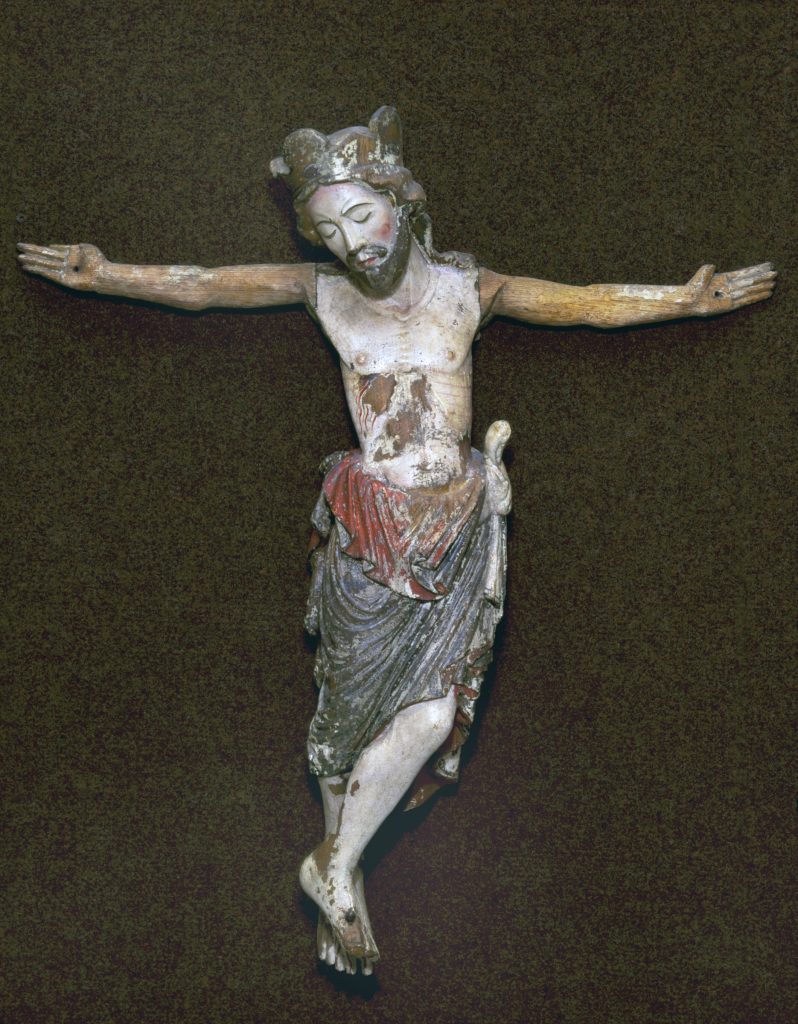This high-quality sculpture, which has lost its cross, shows Christ crucified. His body is slightly bent, his crowned head somewhat bowed to the right, and his eyes closed. The figure wears a long loin cloth with a fold at the top that shows the red inner lining. One foot is placed over the other and both are pierced by one single nail. The rib and breast section of the slender upper body are finely worked, and blood flows from the side wound. The hair, beard and cloth around his waist were originally covered with imitation gold (silver with a brown-yellow glaze) that has oxidized over time. In the sculpture, the Romanesque type of Christ as the crowned King (Christus Rex) merges with the suffering Christ (Christus patiens). This type of Christus Rex patiens (‘Christ the suffering King’) was widespread in Scandinavia and is also found in the crucified Christ figure from Kaupanger (cat. no. 18).

The figure may have been used as an altar cross or as a triumphal cross (rood) standing or hanging on the boundary between chancel and nave. Aron Andersson noted stylistic impulses from English sculpture and suggested an origin in a Norwegian workshop under English influence. In England itself, as a result of Protestant iconoclasm, no large-size crucifixes from the thirteenth century survive.
Norway, 1230-1240
From Fresvik (Sogn), in the museum since 1880
Oak, polychromy, imitation gold
H 77 x W 70 x D 15.5 cm
Inv. no. MA 244